Review lenses RZ/RB system
A while ago I wrote the review about the RZ67ProII that I love to use in my studio work. Recently this review has become totally hot again because Mamiya re-released one of the best studio cameras. When I bought the camera it could be bought for little to nothing in great shape and the lenses were also very cheap. Somethings have changed, prices have gone up and will probably go up even more when more Medium Format shooters will discover this beauty.
You can read my review of the RZ here.
On the forum one of the visitors (Irek) gave a great review/overview on some of the lenses and I decided to put that review also here on the blog, I think a lot of people can benefit from this, so if you’re in the market for some serieus studio glass make sure to read on.
Let’s start with the first post from Irek to get to know him
Hi everyone!
I am very glad to find this forum. There is very few places these days where you can find something interesting about MF and Mamiya RZ “new life” in digital era in particular. So Frank congratulations! But back to topic. I am RZ Pro II user for over 10 years and would like to share some my experience with this brilliant camera. I hope this will be helpful to everyone who started to discover this MF camera/system.
I started MF because I wanted to make prints bigger than 24×30 cm (10×12″) which is maximum reasonable size from decent 35 mm neg. So initial camera was German Pentacon Six TL (6×6), but thanks to its poor optics and even poorer mechanics (overlaped frames) I turned into Mamiya 6×7 format (I am not a big square/Hassy fan). My first one was used RB 67 Pro S with 150 Soft Focus lens. I realized that I had SF after couple of days. But this was important experience (later on this subject in lens section). I managed to buy 90 mm standard lens later. I was shocked by the quality of negs/trannies. I was able to do 50×60 cm (20×24″) enlargements with very fine details! If there is someone who remembers Kodak Ektar 25 than I do not have to add anything more. I even have a wall poster at home: 120×200 cm from scanned neg (Kodak ProGold 100 scanned at 2400 dpi) and it is striking!
The reason to switch into RZ Pro II was metering and long exposure time. I know this is not Frank’s favourite subject, but I hated to hassle with metering. Additionally I was doing a lot of night shots and RB has only 1 sec. the longest exposure time. So I decided to buy RZ with metering prism and that was bingo! Internal meter in majority of cases is just fabulous; 1/6 of a stop accuracy is more than enough even for trannies. And exposure is extended to 8 sec vs. RB. If you add mirror lock-up for critical sharpness and a cable release… It is not DSLR world for sure. BTW: metering prism keeps metered exposing parameters for ca. 60 seconds. So there is plenty of time to reduce down any vibrations – after mirror is locked up – before shutter is released. My initial lens was standard 110 mm. Then I added 180 mm and 1.4x teleconverter. Next I added more lenses and accesories, so now I have: 37 mm Fisheye, 65 mm, 110 mm, 180 mm, 180 SF, 210 APO and 350 APO. In a few days I will write next post with more details about each lens with some resolution/MTF data and some of my example shots for couple of extreme lenses (scanned trannies from Provia 100F). Focal length conversion for 35 mm FF equivalence is easy: just divide by 2 and that’s it (of course for 6×7 film – not for DB sensor). I was really surprised by eyecrop photo – it’s a killer. Now if you consider that 180 lens is one of having lower resolution in a range (more data next time) – you can imagine what you may see from 65, 110 or 210/350 mm! Amazing!
Focusing with WL finder is tricky and as Frank described earlier brighter screen would help. With prism finder I do not find it such difficult; I have microprism section in the middle of the focusing screen and with my poor sight (I wear glasses) it is usually enough – even in a studio. Microfocus knob (on the right side – as there are two focusing knobs: one at each side) really helps in fine-tuning the focus. But sometimes the trick with small back/forth movements works the best. The unique solution is made for focusing – there is a bellows which moves the lens from the film plane. Nice side effect of this system is that with 110 mm lens mimimum close-up focusing distance is 33 cm (as far as I remember). With 37 mm Fisheye you have to be careful not to touch the subject with the front glass of the lens. So you can make very tight close-ups without additional extention tubes. The downside is a light falloff. It is of course automatically compensated if you have metering prism. Otherwise you have to read a compensation factor on a diagram shown on a side of a body and adjust the exposure. In the worst case it is max + 1 EV. Lack of moving elements inside the lens is probably one of the reasons of very good image quality of RB/RZ lenses. In fact we have to bear in mind, that they are true 7×7 lenses… And they succesfully compete with 6×6 Hassy Schneiders.
A while ago there was a big debate on DOF rings on Mamiya RB/RZ lenses and their accuracy. Some argued that Mamiya used CoC (Circle of Confusion) value a little too optimistic. My experience confirmes it which translates to a simple conclusion that this DOF marks are – in majority of cases – useless. If you are determined to use it – compensate it at least for 1 f/stop. And the best way is to use DOF preview – push down a small lever on right lower side of a lens.
Lens review part I
Now I would like to devote some more time to lenses. I will describe my own experience with lenses I have and write what I know about lenses I do not know, but read about. Except 110 mm which I bought new and 180 mm I bought used in Poland all my lenses I bought at keh.com. some of them were marked as “BGN” (bargain). Their condition were really very, very good, so if there is such possibility go for BGN without hesistation.
37 mm
Mamiya Sekor Fisheye Z 4.5/37 W – This is probably latest version (with W). Min app. 32. Documentations says, that minimum focusing distance is 0.26 m, but I just checked with bellows fully extended – it is ca. 1 cm! Weight 1280 g. It is a lens I fell in love immediatelly! As I shoot a lot of modern architecture – for me it is the heart of the whole system! It has visible chromatic abberation and is not as sharp as other lenses, but the beauty of the pictures it is capable to make cause my full forgiveness. As Mamiya is not making any MTF chart for this lens (they state tis in their broshure of this lens), I assume, that the best resolution is at f/8. So I close down to 8 and do not care much for DOF – just focus for the subject an voila. Below are some shots (all photos were scanned Provia 100F at 100 ISO with 2400 dpi. It makes ca. 5300×6600 pixels – ca. 35 Mpix, but they are reduced from original size.). If you are lucky to buy this lens – go for it: play and have fun!
The biggest issue is that with digital back there is a crop factor and the beauty of fisheye is gone…
50 mm.
I do not have any experience with it. There are two versions: non – ULD and ULD. New ULD was priceless. Used is only 2x more expensive ($250 vs. $500). Non-ULD is desribed as soft – specially at the edges. This was probably the reason of ULD design which is sharper. There were some voices regarding significant distortion of ULD verion, but I cannot say anything for sure. As far as I know there is only one version of ULD – ULD M L, and two versions of non-ULD: non W and W (latest). If I would like to buy it I would go for ULD.
65 mm.
Mamiya M 4/65 L-A. This is the latest version. Earlier one were: non W and W. Min. apperture 32. Weight 1060 g. Minimum focusing distance is claimed to be 26 cm, but just checked – with extended bellows it is ca. 10 cm. There is a floating system, but frankly speaking I don’t know what for. I do not see any difference when the extra ring is rotated and adjusted for the distance, so I always leave it at infinity. Probably it should add more corner sharpness when distance is closer. This is really killer lens. One of my sharpest lenses. For architekture and general wide angle is really very versalite lens. Also one of two lenses (50 & 65 mm) having lens hood slipped on not screw-in.
Below is a link to resolution table for this lens (and some other Mamiya lenses and as well other brands). f/8 and f/11 is its best performance.
http://www.hevanet.com/cperez/MF_testing.html
Next charts (MTF) are from old good photodo site. It’s a pity they do not continue with their work anymore…
http://www.photodo.com/browse-lenses/sort-mtf-score-desc
65 mm lens is also scored higher than 180 and 140 as well. BTW: do not get a heart attack looking at Mamiya 6/7 lenses performance. It is completely different league. I used to have M7 with 43 mm lens. It is not comparable to RZ lenses – maybe except APO line.
75 mm.
I was shooting with this lens using my RB camera (it was RB version of this lens). I get it instead of 90 mm, which is typical “standard lens” for RB (sometimes 127 mm is instead), as there is no 2.8/110 mm equivalence. For RB it was ok, because its focal length is pretty close to 90 mm. When I have 110 mm lens, 75 is too close and thus I have 65 mm. Photodo MTF test scored non-shift version even higher that 65 L-A lens. Originally there were Shift Z 4.5/75 mm (1660 g) and M 4.5/75 mm L SB (for Short Barrel- weigth not specified in materials I have). Mamiya claims both lenses to be optically identical – the difference is the shift capabilities of the Shift Z lens. Minimum apperture of both – 32. On of my friends from NYC says, that if he goes to location and has a choice of 3 lenses only – Shift Z is one of the three (second is 350 APO and I can’t remember the third one). SB lenses (75 and 180 mm) were designed to fit tilt/shift adapter and at the same time be able to focus at infinity, because the adapter works somehow as extension tube (27.2 mm) and with regular lens it is impossible to focus at infinity. If you do not need to focus at infinity and want to make close-ups only, regular lenses (non-SB) may be ok. SB lenses with additional spacer ring work as regular non-SB lens.
Probably I was not the only one who preffered 65 over 75 mm version (non shift) because Mamiya is not offering this lens any more (at least it is not listed on the webpage http://www.mamiya-usa.com/rz67-pro-iid.html#Lenses. Regarding shift lens – I do not know if with today’s Photoshop capabilities in paralell lines correction one really need a shift lens…
90 mm.
Sekor Z 3.5/90 W – latest version, but I am not sure if there were non W versions. Weigth – 690 g (!). Min. apperture – 32. I shot 90 mm lens only with RB camera and it was different design. Many would prefer to have faster 110 mm lens. The shortest lens designed for 1.4x extender to perform without quality loss (127mm f/5).
110 mm.
Latest version – Sekor Z 2.8/110 mm W (previous version is non-W). Excellent and very light (only 610 g!) and compact lens. Min. apperture – 32. The closest focusing distance with fully extended bellows – ca. 30 cm (just checked). Prepared for excellent results also with 1.4x teleconverter (156 mm f/4). Its performance was described in previous post in a comparison table link. Optimal performance is between f/5.6-f/11. Althoug this is really beautiful lens I do not use it very often. Maybe because my photography area (architecture and portraits) requires different lenses more often; although I remember my first roll of Provia (it was non-F era) with this lens to test the camera – I was shocked by sharpness and overall quality of the picture (not mentioning quality of metering system). For full length or 3/4 portrait you get very pleasant perspective. As it is pretty sharp wide open, nice out of focus background may be achieved in close-up portraits. Bokeh is nice as well.
Below an example (scanned Kodak Portra 160 VC – parameters as described at 180 mm lens):
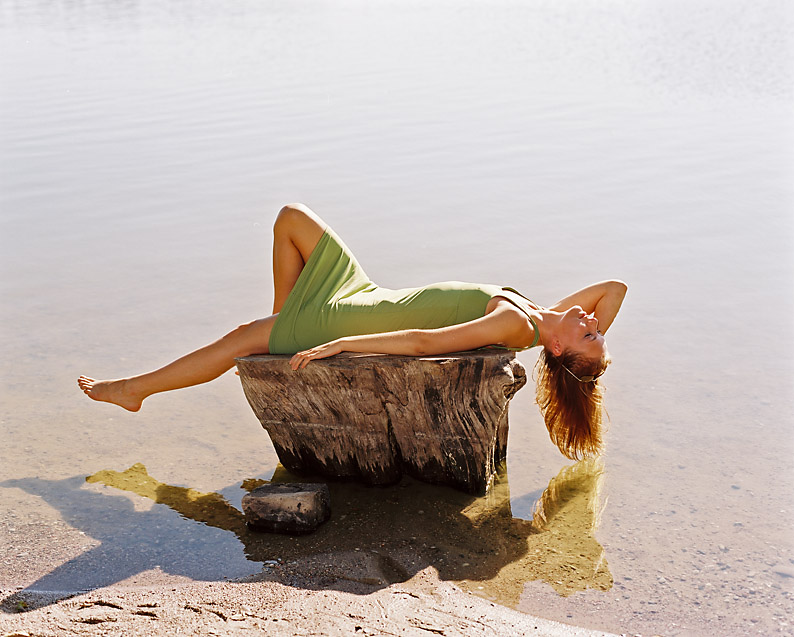 127 mm.
127 mm.
Two versions known to me: Sekor Z 3.5/127 mm W (latest – ) and Sekor Z 3.8/127 mm (non-W). Min. apperture – 32. I have never had even close look at this lens. For me it was strange focal length – not much advantage over 110 mm. Probably there were more of us having such opinion as Mamiya is no loger offering this lens. Prepared for excellent results also with 1.4x teleconverter (180 mm f/5.4).
140 mm Macro.
Three versions: Sekor Macro Z – 4.5/140 mm, the same but W version and Macro M 4.5/140 mm L-A (weigth 930 g and min. app. – 32). The floating system enables edge sharpness for flat subjects (eg. copy work). Prepared for excellent results also with 1.4x teleconverter (198 mm f/6.4). I never had a chance to play with this lens. But it has many possitive comments, so when I will turn to macrophotography (this area is waiting for years already), I’ll probably give it a chance – although photodo MTF charts are not very prompting. BTW: don’t be fooled by marketing guys in terms of macro lenses. What a good macro lens do is 2 things: allow close focusing with a good picture quality and enables flatness for a copy work (documents, paintings etc). For a copy work good macro lens has very similar characteristcs as a lens for enlarger – edge/corners sharpness is very important, so it must be corrected this way. Close focusing and good image quality is the second parameter. So not every lens with claimed “macro” mode is really a macro lens and worth a price tag. So be aware. With Mamiya RZ/RB and bellows system it is even more true. Very high quality is easy to achieve at close focusing distance, so for macro shots when flatness of the subjest is not an issue, you can use any lens.
150 mm.
Sekor Z 3.5/150 W – latest version. Weigth – 825 g, min. apperture – 32. I was working with this focal length only with my RB – it was 150 Soft Focus. For me it was slightly to short for portraits, this is why I opted for 180 SF (more on SF later). No real experience and even opinions about this lens. I think that 180 mm is much more popular.
180 mm.
Three versions: Sekor Z 4.5/180 mm, the same W version and latest Sekor Z 4.5/180 mm W-N (900 g, min. app. 45). Minimum focusing distance with fully extended bellows – 75 cm. The longest lens prepared for excellent results also with 1.4x teleconverter (255 mm f/6.4). Also available in SB – Short Barrel version: Mamiya M 4.5/180 mm L SB. With spacer ring (27.5 mm, 276 g) it is the same design as W-N version.
Very popular lens. Maybe not the sharpes in the garage, but very consistent across f range (see both resolution table and MTF photodo chart for f/4.5 and f/8 – they are very similar). Best performance at f/5.6. As I was not 100% happy about its performance I added 210 APO. Although with 210 mm you cannot make such close-up portraits (the closest focusing distance is 35 cm longer). To achieve more DOF I used this lens with 1.4x teleconverter. It was really very difficult to keep this combo-beast hand-held. This is why many shots were unsharp because of camera movement/too long shutter speed. Bokeh is very nice as well.
Below are two examples of 180 mm + 1.4x TC. It was Kodak Portra 160 VC scanned in minilab (Fuji Frontier) at 300 dpi to 15×19 cm print (ca. 1771×2244 pixels = 4 Mpix); they are also reduced is size.
 180 mm Soft Focus.
180 mm Soft Focus.
Mamiya SOFT (VSF) 4/180 mm D/L. Proably the only version. Weigth 1032 g. Min. apperture – 32 (BTW: 180 W-N has 45). Very tricky lens. It has three levels of soft focus, each with different steps of softness. This lens is funny to work with. It has three discs in a set (be sure you have them when buy used): no 1. (f/5), no. 2 (f/5.6) and no. 3 (f/6.3). The last one is the most recommended (even by Mamiya) to get the most pleasing results. This is a RZ version of very good RB SF lens – 4/150 mm I desribed earlier. I was very happy with the RB 150 mm SF lens (except it was little too short). But once you “get” the lens and understand its logic – you’ll be fine. To mount a disc you need to unscrew front part of a lens, put a disc on a special place and screw it again. F-stops stated on the discs shows what the maksimum apperture will be after putting the disc in (f/5. f/5.6 or f/6.3)
I’ll try to describe the concept of the lens in the shortest possible way. It has diffusion coming from two effects: spherical abberation (as lens has not 100% corrected edge elements) and diffraction diffusion (coming from small holes in the disc). Discs varies in number of holes and size of big hole in the central part of the lens optics (preventing core part of the lens to be affected in any way). This affects how both diffusions are mixed. Using disc no. 3 there will be 20% sferical abberation and 80% diffraction diffusion. The trick is that soft focus is created only between f/4.5 and f/8. Stopping down beyond f/8 it behaves as normal 180 mm lens. The real function of apperture in this range is to make levels in soft focus effect. At f/4 the effect will be the strongest, at f/8 will be the weakest.
I was getting very nice results with RB lens when shooting into the light. Softening effect in highlights was very nice and unusual.
But with 180 SF I had terrible results… Holes from the discs are too visible and are spoiling the whole effect. I was so dissapointed, that I did not give another discs a chance again… Maybe I have to play with the lens again? Maybe I should use disk no.2 and this way get 50/50 sferical/diffraction difusion mix (lower number of holes creating diffractiuon)? Below is an example of the reason of my dissapointment…
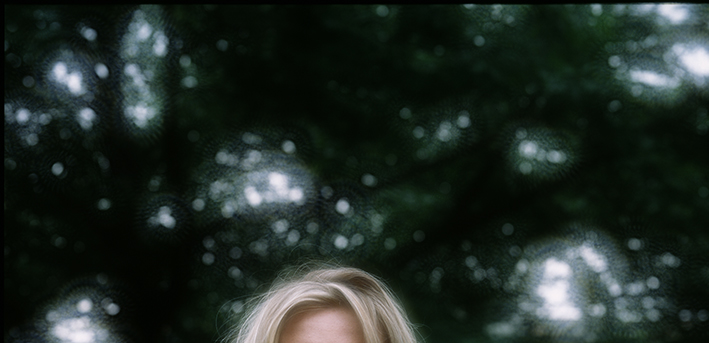 This lens is also very difficult to focus. Wide open is soft all the time, stopped down to f/8 the image on the focusing screen is very dark (maybe brighter screen in this cease would help?). If the primary objective to use this lens was to reduce wrinkles – Photoshop will do this in more effective and controllable way. So if I am concerned – maybe some front ray of light would create some amazing shots. Maybe. By now this lens is sitting on a shelf and I regret 150 SF I had for my RB. Maybe one should use 150 SF with RBL setting on a RZ camera?
This lens is also very difficult to focus. Wide open is soft all the time, stopped down to f/8 the image on the focusing screen is very dark (maybe brighter screen in this cease would help?). If the primary objective to use this lens was to reduce wrinkles – Photoshop will do this in more effective and controllable way. So if I am concerned – maybe some front ray of light would create some amazing shots. Maybe. By now this lens is sitting on a shelf and I regret 150 SF I had for my RB. Maybe one should use 150 SF with RBL setting on a RZ camera?
BTW: W and non-W lenses are easily recognizeable: the apperture ring in W versions has half-stop marks between full stop marks – non-W haven’t them; only full stop numbers are scaled.

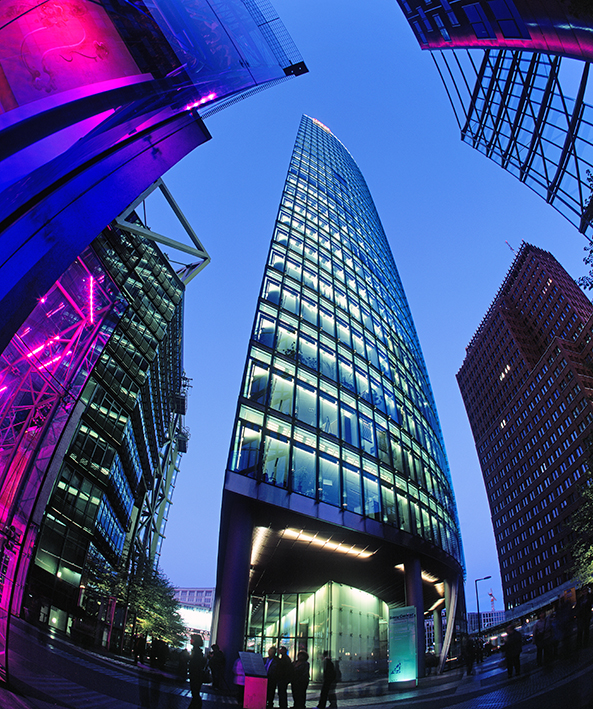

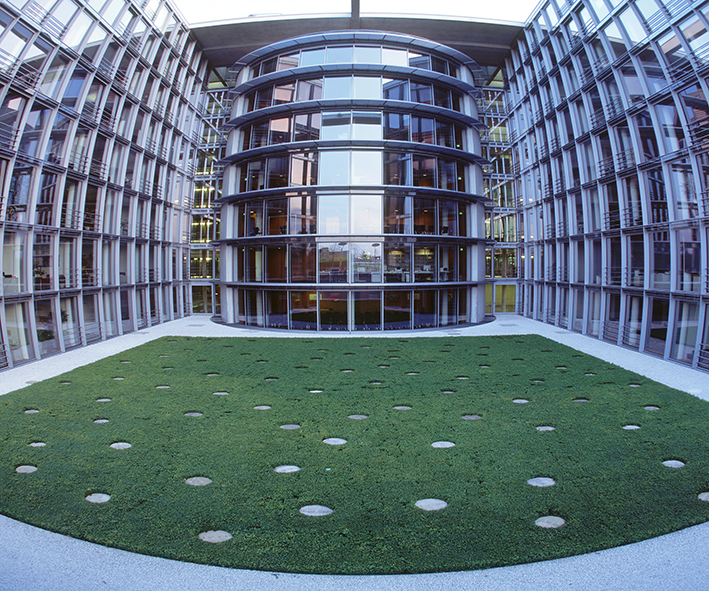
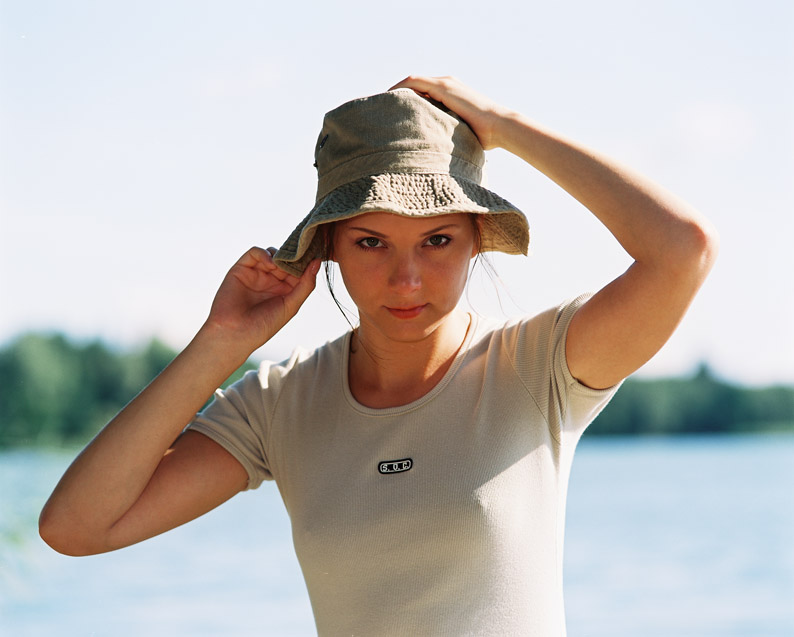

Hi,
Second part of my review is here:
http://www.doorhof.nl/blog/index.php?topic=1708.msg15163#new
Take care Irek
In new forum it is located here:
http://www.doorhof.nl/forum/index.php?topic=1708.msg15138#msg15138
Take care Irek
It seems that since digital backs for RZ are more available, less used lenses are available – at least at KEH. Eg. 210 APO or 350 APO – I haven’t seen there for months. It is good I have bought them back in2008 😉
Irek
Lenses etc. are indeed rising a lot lately 😀
Hello. Thank you for your good work. You make a ref in this article to the M7ii. Are you saying that it’s definition is much better or lesser than the RZ ? Thank you for clarifying.
I never worked with the M7ii I think the one that wrote this did, it was a guest blog.
I am just wandering – are these lenses originaly meant to be used without hood? I didn’t came across even one single lens with hood on eBay…
There is a lenshood available that fits most/all lenses. It’s like a bellows system but that as a hood. I use that one myself and just switch per lens.
Appreciate your quick response!
I’ll try to dig deeper! Maybe will have a luck and will get on one!
Thanks a mill!
In addition to the bellows hood there are three collapsible rubber hoods made for the entire range. The one for the 50 & 65 is square, then there are two different circular ones for the normals and teles. I have all of them. The bellows hood offers the best coverage but it’s also pretty large. The rubber hoods come in very handy when you take the camera out in the field.